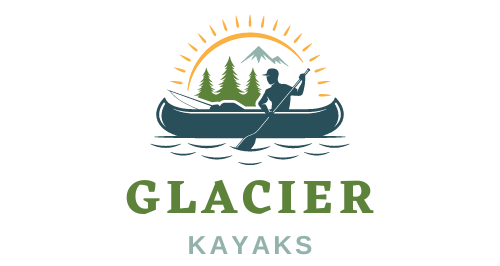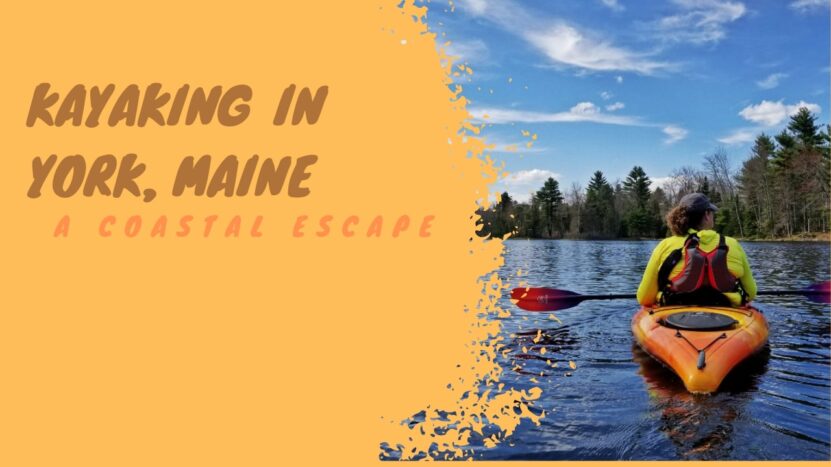If you’ve ever dreamt of sliding across tranquil waters while absorbing the breathtaking panorama of Maine’s coastline, this blog post is written especially for you. Get ready to embark on an exhilarating journey as I provide you with an exhaustive guide to kayaking in York, Maine, particularly tailored for beginners.
Kayaking in a Nutshell
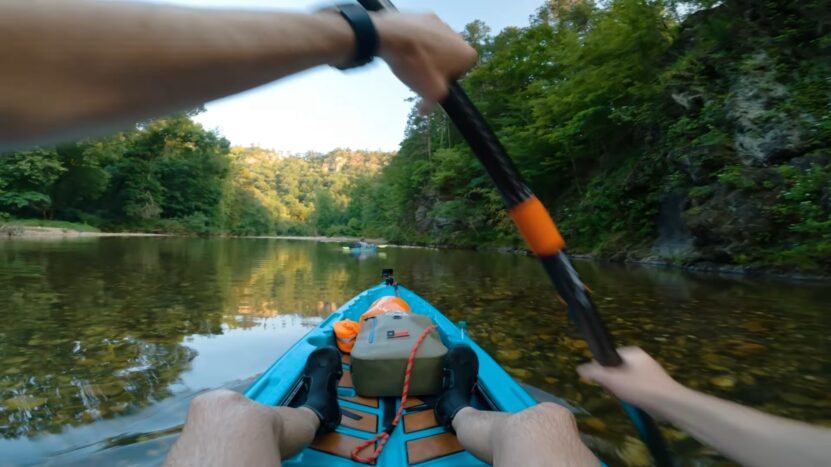
Before we delve into the heart of York’s pristine beauty, let’s get ourselves acquainted with the basics of kayaking. Essentially, it is a water sport that involves paddling using a double-bladed oar and a small boat known as a kayak. Encompassing a broad spectrum of types, kayaking can be leisurely or thrilling, based on the water and your skill levels.
Why Kayak?
Kayaking is a fantastic way to immerse oneself in nature, promote physical fitness, and challenge oneself. You not only enjoy the solace of being on the water but also engage almost all muscle groups during the process. Plus, it’s an activity you can enjoy alone, with friends, or family, and it’s suitable for all ages.
A Brief Overview of York, Maine

Located in the southwestern tip of Maine, York, known for its stunning beaches, historic sites, and picturesque lighthouses, provides an ideal setting for adventures. Its diverse waterways, comprising of serene rivers, estuaries, and the expansive Atlantic Ocean, create an array of kayaking experiences from tranquil paddling to challenging sea kayaking.
York’s Weather and Best Kayaking Season
The best time for kayaking in York extends from late May to early October, offering warmer temperatures and calmer waters. Always consider local weather forecasts and marine conditions before setting out to ensure your safety.
Equipment
Like any outdoor activity, kayaking requires appropriate equipment. The essentials include a kayak, paddle, personal flotation device (PFD), paddle leash, and kayak car rack for transportation. Also, consider investing in a good waterproof bag to keep your belongings dry.
Choosing the Right Kayak
As a beginner, choosing the right kayak can feel overwhelming due to the numerous options available. Consider starting with a recreational kayak — they are stable, easy to maneuver, and perfect for calm waters found in lakes and gentle rivers.
Kayaking Basics
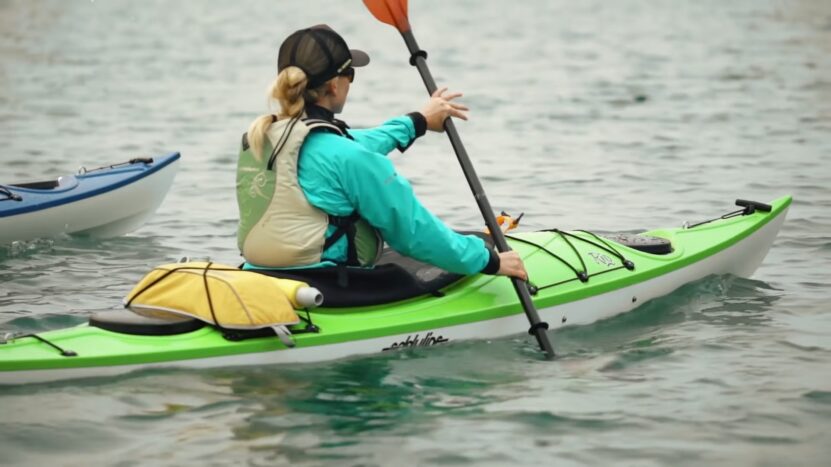
Now that we’re acquainted with the gear, let’s go through the fundamental kayaking techniques.
Getting In and Out of a Kayak
Getting in and out of a kayak can be tricky for beginners. Always ensure the kayak is in shallow water, parallel to the shore. To get in, hold onto the sides of the kayak, lower your body into the seat, and swing your legs in. To get out, push yourself up using the sides of the kayak and swing your legs out.
Paddling Techniques
In kayaking, good technique is crucial. Here are a few key points:
- Forward Stroke: This is your primary move. Place the blade fully into the water near your feet, pull it back alongside the kayak, then lift it out when it reaches your hip. The key is to engage your torso, not just your arms.
- Sweep Stroke: This helps you turn the kayak. The forward sweep starts the same way as the forward stroke, but you sweep the paddle out in a wide arc. A reverse sweep stroke is just the opposite and can help you turn the other way.
- Bracing Stroke: This stroke helps you regain balance if you feel like you’re about to capsize.
Safety Tips
- Always wear a PFD and know how to swim.
- Stay hydrated and protect yourself from the sun.
- Stay close to the shore until you’ve built up skills and confidence.
- Always let someone know your plan and expected return time.
Best Kayaking Spots in York, Maine
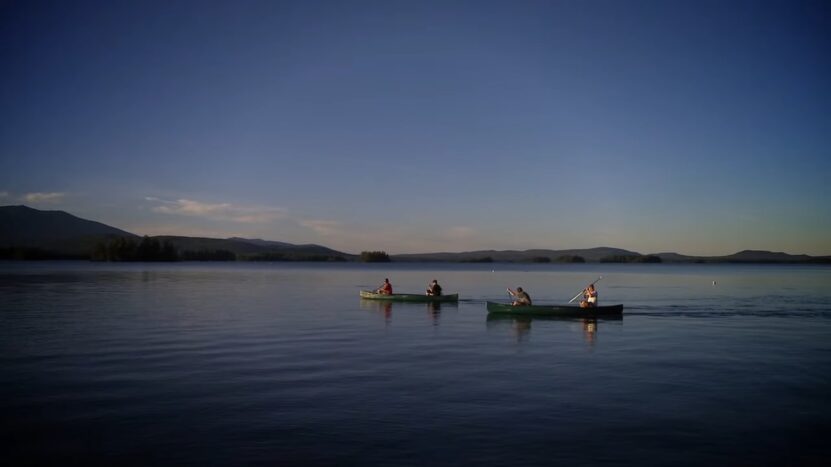
York Harbor
Ideal for beginners, York Harbor provides calm waters and beautiful views of historic mansions and the iconic Cape Neddick (Nubble) Lighthouse.
York River
A tranquil flatwater river that is perfect for beginners. You’ll paddle amidst beautiful landscapes and might spot wildlife like eagles, ospreys, and seals.
Brave Boat Harbor
This estuary provides a bit more challenging conditions, ideal for beginners wanting to step up their kayaking skills.
Kayaking Etiquette and Environment Protection
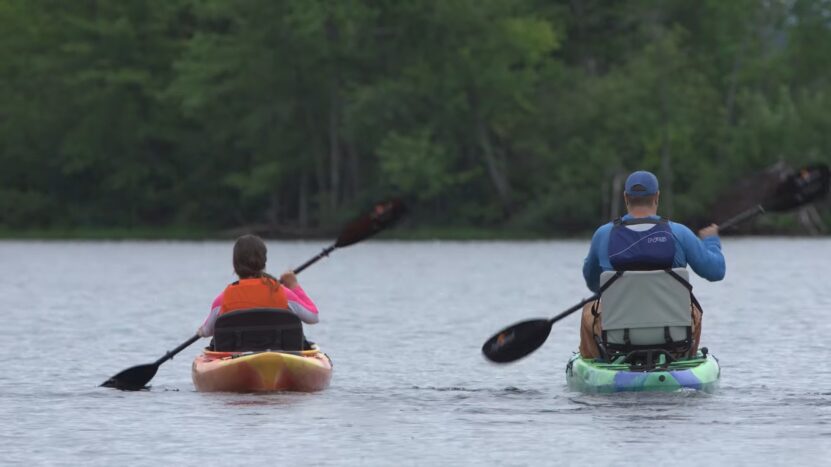
While immersing ourselves in the thrill and tranquility of kayaking, it’s paramount to maintain respect for the environment and other water users. Here are some key points of kayaking etiquette and environmental protection:
- Avoid disturbing wildlife: Paddle quietly and keep a respectful distance from any animals you encounter. Remember, you are a guest in their home.
- Leave no trace: Carry out all trash that you bring in. If you see trash that others have left behind, consider picking it up too.
- Respect other water users: Maintain an appropriate distance from other kayakers, boaters, and swimmers. Avoid areas where people are fishing.
Training and Guided Tours
For beginners, joining a kayaking course or guided tour is a fantastic way to get started. You’ll learn essential skills and safety procedures under the watchful eye of experienced guides. York has several tour operators who offer guided trips and lessons.
- York Harbor Marine: Offers kayaking lessons and guided tours along with kayak rentals. It’s perfect for beginners to learn the basics and get comfortable on the water.
- Coastal Maine Kayak & Bike: Located nearby in Kennebunk, they provide guided tours, lessons, and rentals. It’s a short drive from York, and they offer a variety of tours for all skill levels.
Paddling Events in York
Participating in local events is a great way to engage with the kayaking community. The York Land Trust occasionally organizes Paddle the York River events, which are perfect for kayaking enthusiasts to connect and enjoy the beauty of the York River together.
Advanced Kayaking Skills
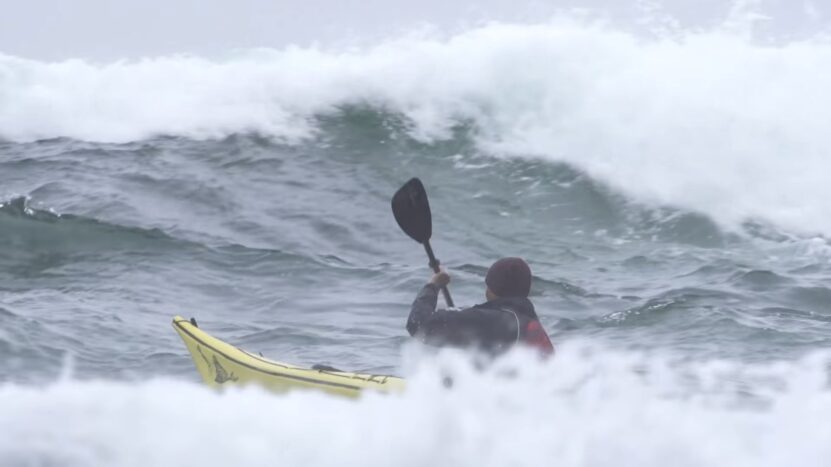
As you continue to improve your kayaking skills, there are advanced techniques to learn that can make your time on the water even more enjoyable and safe.
Eskimo Roll
This is an essential self-rescue skill for sea kayakers, where you learn to right your kayak after capsizing without exiting the boat. You will need a mentor or a professional instructor to teach you this skill in a controlled environment.
Edging
Edging involves leaning your kayak on its side to help it turn more effectively. It’s a crucial skill for maneuvering your kayak, especially in rough water or tight turns.
Ferrying
Ferrying is a method of crossing a fast-flowing river without being swept downstream. You angle your kayak upstream and use the current to carry you across. This skill is particularly useful for river kayaking.
Health Benefits of Kayaking
Kayaking isn’t just an adventure sport; it’s also an excellent workout. Here are some health benefits:
- Upper Body Workout: Paddling a kayak is a great way to develop upper body strength, working out your arms, shoulders, back, and core.
- Cardiovascular Fitness: Like any endurance sport, kayaking can help improve your cardiovascular fitness.
- Stress Reduction: Being out on the water surrounded by nature can significantly reduce stress and improve mental health.
What To Pack For Your Kayaking Trip
When you’re going for a day of kayaking, especially in a place like York, Maine, with its changeable coastal weather, there are some essentials you’ll want to bring with you:
- Water & Snacks: Kayaking is physical, and you’ll want to stay hydrated and keep your energy up.
- Sun Protection: Sunscreen, a hat, and UV-blocking clothing can help protect you from sunburn.
- Spare Clothes & Towel: In case you get wet, you’ll want a dry change of clothes waiting for you.
- First Aid Kit: It’s always smart to have basic first aid items handy.
- Local Map: A map of the local waterways can be very useful, especially in an emergency.
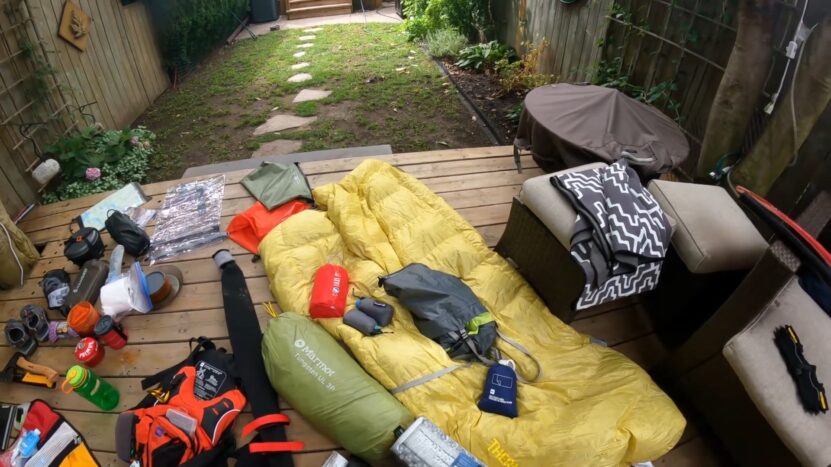
Closing Thoughts
Kayaking in York, Maine, offers an unrivaled experience for novices and seasoned paddlers alike. With its breathtaking scenery and diverse waters, it’s a paradise for any kayaking enthusiast. Remember to stay safe, respect the environment, and have a fantastic paddling adventure!
